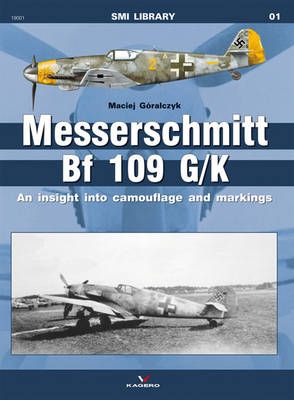SMI Library
1 total work
When the Bf 109 was first designed in 1934, by a team led by Willy Messerschmitt and Robert Lusser, its primary role was that of a high-speed, short range bomber interceptor. The Bf 109 was also designed to take advantage of the most advanced aerodynamics of the time and embodied structural techniques which were an advance on its contemporaries. In the years of the Blitzkrieg, the Bf 109 was the only single engined fighter operated by the Luftwaffe, until the appearance of the Fw 190.
The G series, or"Gustav", was introduced in mid-1942; its initial variants (G-1 through G-4) differed only in minor details from the Bf 109F, most notably in being powered by the more powerful 1475 PS DB 605 engine. The final production version of the Bf 109 was the K series, or "Kurfürst", powered by the DB 605D engine with up to 2,000 PS output, and introduced in the autumn of 1944. Though externally akin to the late production Bf 109G series, a large number of detail internal and aerodynamic improvements were incorporated to the design that improved its effectiveness and remedied existing flaws, keeping the fighter competitive with the latest Allied and Soviet fighters.
The G series, or"Gustav", was introduced in mid-1942; its initial variants (G-1 through G-4) differed only in minor details from the Bf 109F, most notably in being powered by the more powerful 1475 PS DB 605 engine. The final production version of the Bf 109 was the K series, or "Kurfürst", powered by the DB 605D engine with up to 2,000 PS output, and introduced in the autumn of 1944. Though externally akin to the late production Bf 109G series, a large number of detail internal and aerodynamic improvements were incorporated to the design that improved its effectiveness and remedied existing flaws, keeping the fighter competitive with the latest Allied and Soviet fighters.
